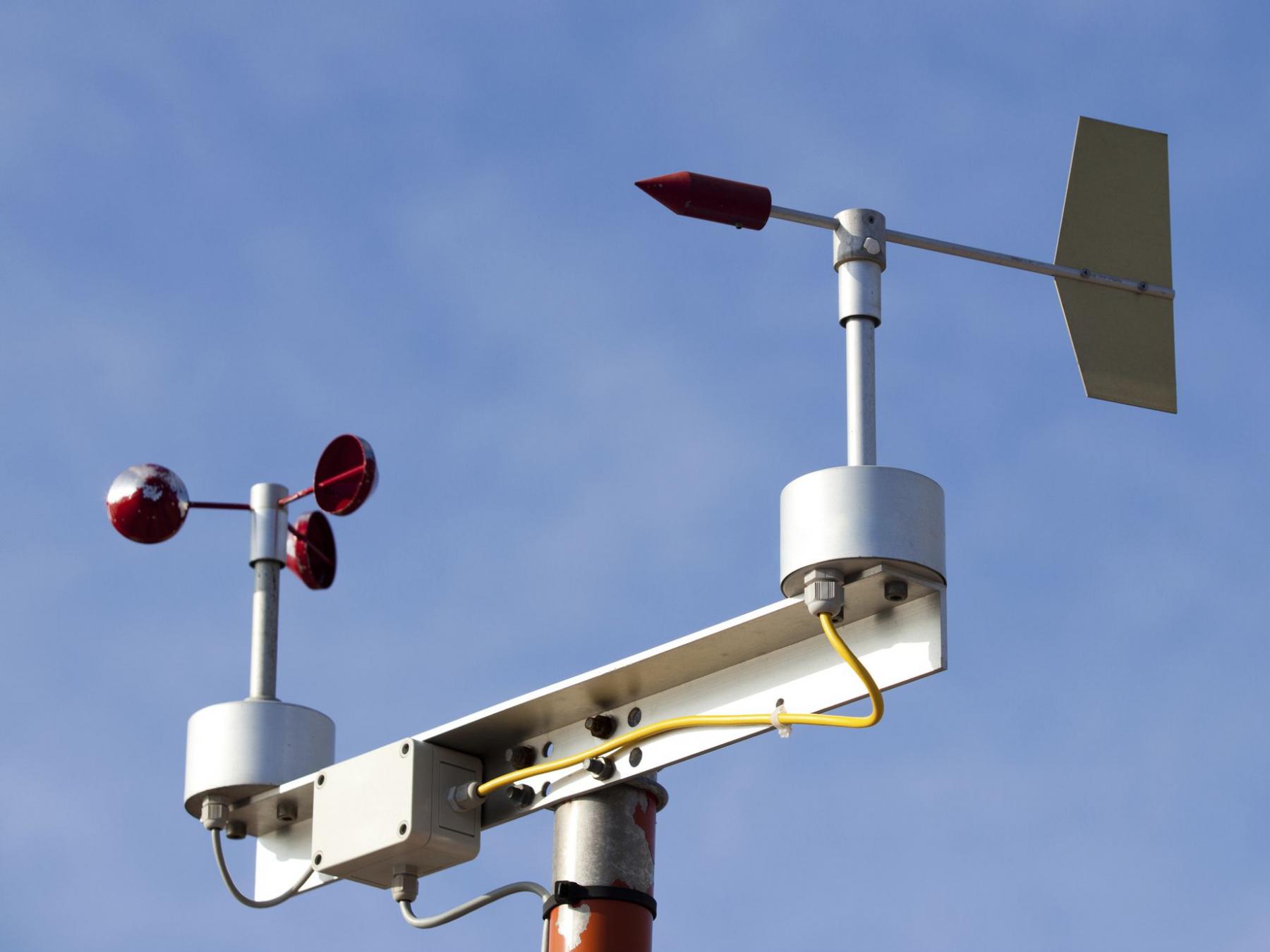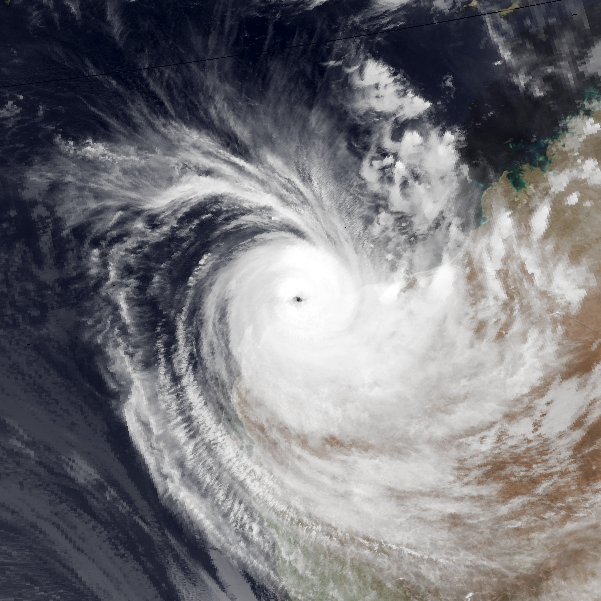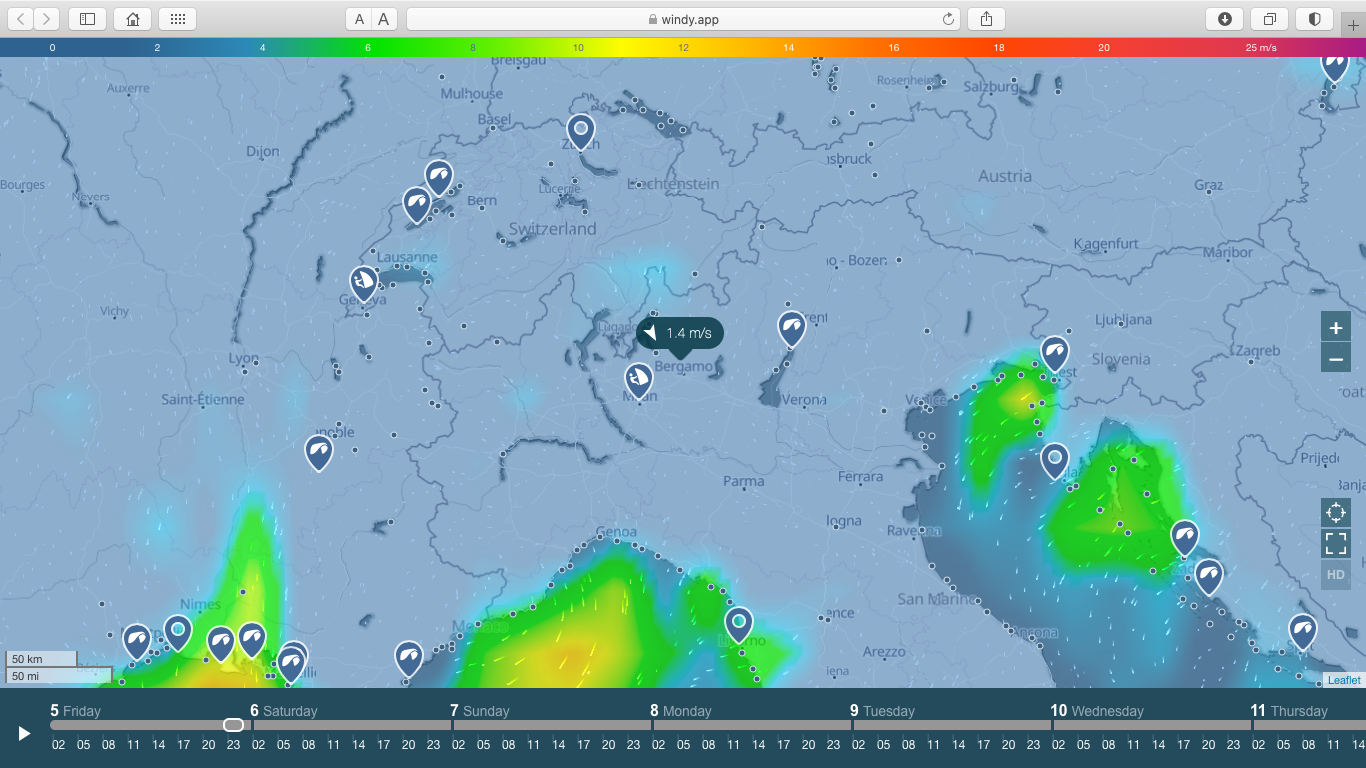
What is the wind speed and how do we measure it
Wind speed or wind velocity is one of three major characteristics of air movement on par with wind direction and wind gusts. In this article, we will understand what wind speed is and how it is measured. It will help you better forecast weather and use wind correctly for sports that are impossible without this weather phenomenon.
What is the wind speed definition?
Let's start with the air itself. The air in the atmosphere moves from high to low pressure due to the change of temperature. The wind is the result of this movement. In simple words, wind speed is the distance covered by air at a particular time.
It is important to know the difference between wind speed and wind gusts, which are short accelerations of wind speed up to 20–30 seconds.
Several factors influence wind speed and wind gusts, such as atmospheric pressure gradient, Rossby waves (giant bends of high-altitude winds), jet streams, and local weather conditions. There is also a strong connection between wind speed and wind direction.
In turn, wind speed affects aviation, construction, as well as many sports and outdoor activities — windsurfing and kitesurfing, sailing, paragliding, and others. It means that before unwrapping your wind sail or kite, you have to check the wind forecast first.
How do we measure wind speed?
The traditional and the most common tool or the instrument used for measuring wind speed (and direction) is called an anemometer. It consists of a vertical pillar and three or four cups. These cups capture the movement of air flows, and that’s how we get data about wind speed. But this is not the only type of instrument for measuring wind. There are also:
- Ultrasonic anemometers that have no moving parts and measure wind speed using high-frequency sound, and acoustic resonance anemometers — variants of the ultrasonics.
- Laser Doppler anemometers that which use beams of light from a laser based on the principle of the reflective signal.

Classical anemometer with a vertical pillar and three or four cups. Photo: Mayo5 / Getty Images
By all these instruments — traditional and modern — the wind speed is measured in meters per second (m/s), miles per hour (mph), and kilometers per hour (kmh). The first unit is recommended by the World Meteorological Organization (WMO) for measuring wind. In general, m/s are used almost everywhere except the United States, which uses mph to measure speed, including the wind.
There are also two other common measurements units, which may look strange for you: knots and beauforts. Well, you've probably heard about knots — these units are commonly used in the sea by sailors and fishermen but what are beauforts?
Before the advent of anemometers, the wind was measured by the Beaufort wind force scale, which relates wind speed to observed conditions at the sea and on land. In other words, wind speed and strength are not measured by specific instruments, but by human visual observation. This scale was created in 1805 by Francis Beaufort, a hydrographer, meteorologist, and Royal Navy Irish officer (later Rear Admiral).
It is also important to know that wind speed is usually measured at 10 meters (32 feet) above sea level. So the anemometers are often mounted on the roofs of buildings and other places, not on the ground. It means that the wind forecast you see in the app is always made at this exact and only high.
But that doesn't mean that we don't measure wind at other heights — we do, it's just more difficult. At the same time, such measurements are not necessary for everyone, because the most people live around sea level. Knowing the wind at higher altitudes, let's say 2,000 or 3,000 meters (6,561 or 9,842 feet), may be necessary for those who live in the mountains or do various sports in the air, as well as for pilots of ultralight aviation.
Now, let's answer three of the most common questions about wind speed, which you've probably asked yourself more than once:
1.jpg)
Francis Beaufort / Wikipedia
What is a high wind speed?
In general, the high wind speed for a walking person is considered to be from 25 to 31 mph (11 to 13.8 m/s). These wind conditions are also called "Strong Breeze", which set the branches of the trees in continuous motion; whistling sounds are heard in overhead or nearby power and telephone lines; umbrellas are used with difficulty.
Accordingly, wind with lower speed is considered not strong or not fast, up to very light wind of 1 to 3 mph (0.4 to 1.3 ms/) and its complete absence (calm).
What wind speed is dangerous?
The dangerous wind speed is from "Near Gale" or 32 to 38 mph (14.3 to 16 m/s) and faster. In these wind conditions, the whole trees are in motion; you may be uncomfortable walking against the wind. The faster and stronger wind breaks twigs and small branches; small trees may be blown over and uprooted. It makes more serious damages.
It is important that these and the previous characteristics refer to observations on land. In the sea, we understand how strong the wind is in terms of height and length of waves, white foam, and so on. The standards for both land and sea observations are historically derived from the same Beaufort scale.
What wind speed is a hurricane?
The storm usually occurs when the wind speed is from 64 to 75 mph (28 to 33 m/s), and the hurricane, a type of strongest and most destructive (tropical) storm, can be expected when the wind speed is over 75 mph (33 m/s).
Storms and hurricanes are destructive not only because of the strongest winds, but also heavy and prolonged rainfalls (downpours) that causes flooding, as well as thunderstorms, lightnings, and other extreme weather events.
What is the fastest wind speed ever recorded?
It is considered that the fastest wind speed was recorded at the time of the category 4 tropical cyclone Olivia on April 10, 1996, in Australia. This cyclone has the maximum wind gust of an incredible 253 mph (113 m/s, 408 km/h, 220 knots). The measurement was made by an automatic weather station on Barrow Island in the region of Western Australia. During the same cyclone, several "slower" (but still extremely high) gusts were recorded many times with a maximum 5-minute mean speed of 180 km/h (49 m/s).
The previous record of 230 mph (103.3 m/s) was registered in April 1934 across the summit of Mount Washington, New Hampshire, USA. Both measurements have been officially confirmed by WMO experts.

Cyclone Olivia, Australia, April 1996 / Wikipedia
What is the average wind speed?
The average wind speed or mean wind speed is the speed over a certain period of time, determined by multi-year weather observations (weather history) conducted 365 days per year. This data is then divided by the number of days, months, and so on to figure out what the average wind speed is at a particular place and time. For example, we know that the average wind speed in London in May is 3.5 m/s (7.8 mph), and the most and least windy months are January and August, respectively.
This knowledge helps us build buildings properly, plan other different types of work and, last but not least, practice wind sports and outdoor activities.
Where to find wind speed forecast in the Windy.app?
The wind data is the main weather data in the app, so you can find it everywhere. We even did the math — there are 35 different ways of finding the wind forecast, of which the two main ones are:
On the Windy.app website
Go to the Live Wind Map of the world right on this website to get the wind speed forecast at any point of the map. To do so, you don't even need to click on anything — just move the mouse on the screen or a finger on your trackpad:

Wind Map on the Windy.app website
On the Weather Map in the app
There is the same Live Wind Map in the app. You can see a general wind pattern for the entire world or any point on the map — here, you need to click on the screen to get the forecast:
Weather Map in the Windy.app for iOS
On the Spot Screen in the app
Then go to the spot. There is more data and it is more detailed. Sports also have weather profiles for specific sports:
Spot Screen in the Windy.app for iOS
On the Home Screen in app
To see a Weather widget like this for all of your favorite spots, activate it: Main Menu Bar > Settings > Units > Favorite spots.
Wind Windget on the Home Screen in the Windy.app for iOS
Text: Ivan Kuznetsov, an outdoor journalist, editor and writer from the Dolomites, Italy, and Karelia, Finland, with 10 years of professional experience. His favorite sports are hiking, cycling and sauna. Read his other articles
Cover photo: Mael Balland / Unsplash
You will also wind useful
What are the main types of wind
Learn to read wind barbs symbols
Learn to read the Enhanced Fujita scale for rating tornado intensity
Latest News
Professional Weather App
Get a detailed online 10 day weather forecast, live worldwide wind map and local weather reports from the most accurate weather models.
Compare spot conditions, ask locals in the app chat, discover meteo lessons, and share your experience in our Windy.app Community.
Be sure with Windy.app.



